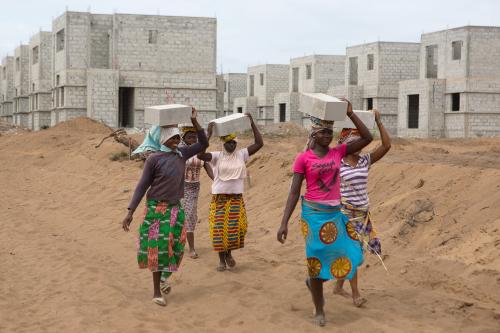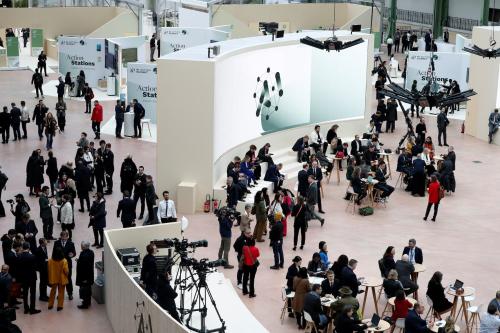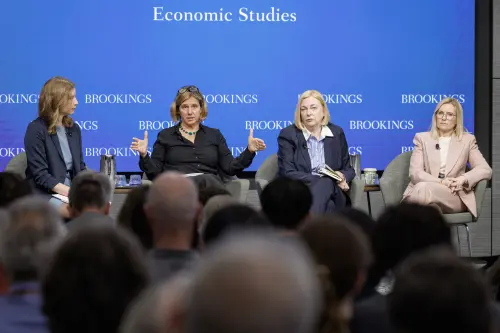This article is part of a series marking International Women’s Day, on March 8, 2016. Read the latest from Global scholars on bridging the gender inequality gap, the role of the Sustainable Development Goals, and women’s well-being.
Reflecting on International Women’s Day, celebrated on March 8 every year, two questions kept me busy: why celebrate women, and is there any reasoning behind male preference? A common answer that I could find for both questions was that it is tougher to be a woman in environments where men and women are not treated equally.
As an economist, I get plenty of opportunities to look at empirical analysis where the gender indicator variable is thrown in to explain differences in schooling, entrepreneurship, labor force participation and wages, and political participation to name a few. It is unsettling to find out that the female indicator variable is often associated with low participation and performance in most of these dimensions. It is even more annoying not to find the answer to why we see these imbalances for individuals across comparable competence in those regressions. It has partly got to do with the fact that the answer lay outside the realm of schools, labor markets and businesses, parliaments that women participate and operate in—where we are trying to compare their performance and participation.
How do we begin to correct for gender imbalances?
A simple comparison of average primary school enrollment rates indicate that gender imbalance starts early on even before women enter into the productive workforce. To make matters worse, education systems do not necessarily teach girls and boys an equal set of skills, especially when it comes to beliefs and values about gendered division of labor. These initial differences later translate into lower participation and performance in productive sectors. Looking at employment and labor force participation rates in sub-Saharan Africa (Table 1), women have lower employment and labor force participation rates than men and these gaps continue to widen as women enter into their reproductive age. About one in five seats in parliament and ministerial positons are held by women and just 15 percent of firms have top female managers in the region.
Table 1. Global comparison of indicators of gender performance
| SSA (M) |
SSA (F) |
World (F) |
Middle-Income (F) |
High-Income (F) |
|
| Net primary enrollment rate (%) | 80 | 75 | 88 | 89 | 96 |
| Labor force participation rate (% of population ages 15+) | 77 | 64 | 50 | 48 | 53 |
| Labor force participation rate (% of ages 15–24) | 56 | 51 | 39 | 35 | 41 |
| Employment to population ratio (% ages 15+) | 71 | 58 | 47 | 45 | 48 |
| Employment to population ratio (% ages 15-24) | 56 | 44 | 34 | 31 | 35 |
| Seats held by women in national parliament (%) | 23 | 23 | 21 | 26 | |
| Proportion of women in ministerial level positions (%) | 20 | 18 | 16 | 21 | |
| Firms with female top manager (%) | 15.2 | ||||
| Total fertility rate (births per woman) | 5.1 | 2.5 | 2.4 | 1.7 | |
| Sex ratio at birth (male births per female births) | 1.04 | 1.07 | 1.09 | 1.05 | |
| Account at a financial institution | 32.7 | 25.1 | |||
| Borrowed any money in the past year | 53.9 | 55.1 |
Source: World Development Indicators. All statistics presented are for year 2013 except for access to finance variables which are reported for year 2014. SSA=sub-Saharan Africa, M=male and F=Female
As a woman born and raised in such an environment, I could not help but look inward and ask what helped me rise up in spite of these constraints. In retrospect, persistently refusing not to be treated any differently than my male counterparts took me long way forward.
However, women face many more challenges than men in schools, labor markets, and business and politics. At school, girls face higher security risks in fragile states and get dragged from studying to attend to household chores more often than their male peers. As a business person, they are more financially constrained and face different sets of challenges when they run businesses. Customary traditional or religious practices often discriminate against women on access to productive assets such as land and financial resources in the region, even when the legal framework treats men and women equally.
Achieving gender equality
There seems to be a case for designing gender-sensitive policies if the constraints men and women face as entrepreneurs are different. Recent publications present empirical evidence that competing household needs make capital accumulation and business expansion especially difficult for female African entrepreneurs, diminishing their ability to save and re-invest profits. Intra-household decision-making power not only affects resource allocation at home, it can also affect the business decisions of female- led entrepreneurship. A study of micro-enterprises in urban Ghana questions the ability of cash transfers alone to stimulate growth in female-owned enterprises.
Moreover, a study of Ethiopian micro and small enterprises has shown that businesses situated near customers and raw material suppliers perform better than those located closer to home and that their profits fall as the owners’ labor supply to their business decline—a fact that has significant implications for women-owned businesses, given women’s disproportionate share of family and household responsibilities.
Thus, there is a need to design gender-sensitive working environments for women to meaningfully participate in productive sectors outside the home and in political decision-making to ensure their voices are being heard and that they are able to participate in the design of policies that are serving the needs and challenges of women.
Last, but not least, let us not forget to include men as partners in the gender equality agenda for a balanced division of labor and for effectiveness of gender-sensitive policy interventions.
The Brookings Institution is committed to quality, independence, and impact.
We are supported by a diverse array of funders. In line with our values and policies, each Brookings publication represents the sole views of its author(s).







Commentary
The case for gender-sensitive policies in sub-Saharan Africa
March 7, 2016